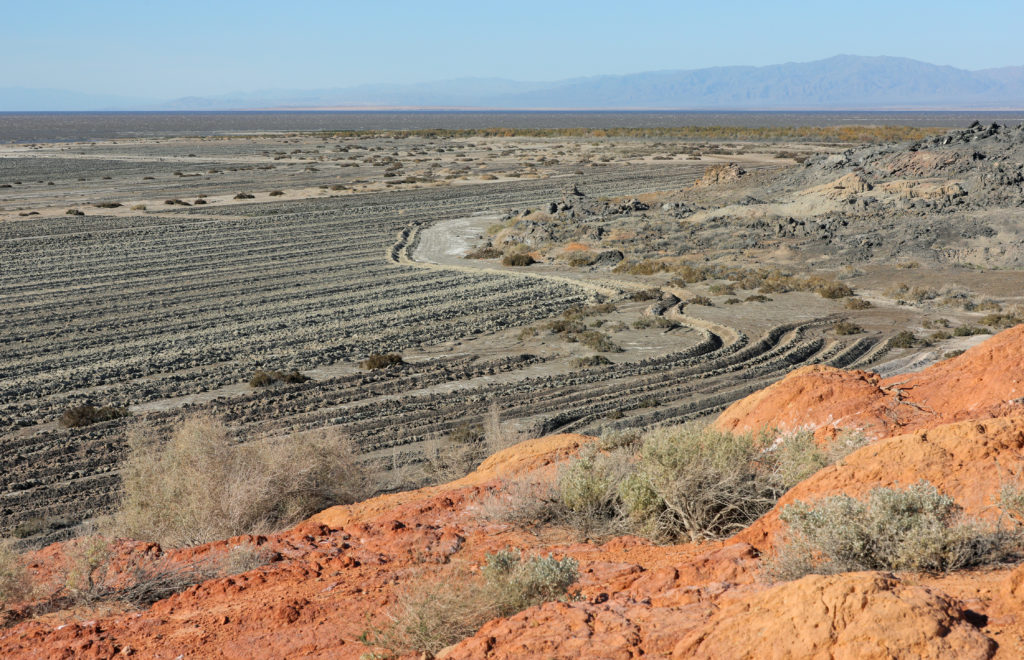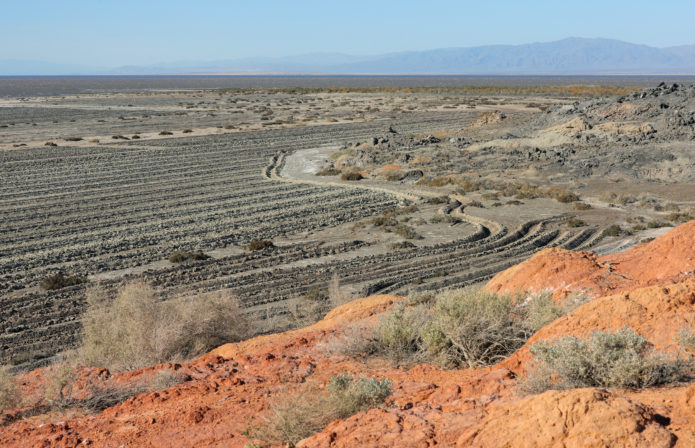
When the Quantification Settlement Agreement (QSA) was signed in 2003, it was designed to help California manage its use of the Colorado River and in doing so bring a level of peace among the Basin States that depend on the river. A key component of this historic agreement has been mitigating impacts of the water transfers that are the cornerstone of the QSA. With the environmental effort ongoing, it is worth delving into what that work has entailed from the start of the QSA to where it is today.
QSA-related legislation established a QSA Joint Powers Authority (QSA JPA) made up of the Imperial Irrigation District, the San Diego County Water Authority, the Coachella Valley Water District, and the state to oversee a mitigation program. The point of this blog is to build an understanding of what the QSA JPA is continuing to do in order to meet its environmental mitigation requirements—a role the JPA has taken seriously from the start and continues to carry out every day. It is critically important to understand the QSA JPA at no time has ever stopped its work and remains focused on a robust air quality mitigation program at the Salton Sea. That said, the work—including environmental permitting, design and planning, and the selection of contractors to carry out projects—takes time.
The QSA-related legislation tasked the JPA with mitigating the distinct environmental impacts of the QSA water transfers. Specifically, the three water agency members were tasked with providing $133 million in mitigation costs in 2003 dollars ($287 million over the life of the QSA) while the state is required to cover any mitigation costs above that mark. Separately, the state has the sole responsibility to undertake a restoration effort at the sea that addresses the larger long-term ecological needs of a sea that was already struggling long before the QSA. While the QSA JPA is not responsible for this restoration program, the three water agencies (as per QSA-related legislation), provided more than $63 million in seed money into the Salton Sea Restoration Fund.
With roles established in 2003, the QSA JPA immediately began implementation of an environmental mitigation program, including an air quality mitigation program at the sea. Funding was also directed to meet additional requirements. For the first 15 years of the QSA, the JPA funded the following efforts:
- A fallowing program in the Imperial Valley to provide water to the sea to maintain salinity levels, and by extension shoreline levels, which took place from 2003 to 2017 and provided 800,000 acre-feet of water to the sea;
- A recently completed 1,000-acre managed marsh near the sea to provide habitat for both fish and bird life. The project offsets the impacts of reduced flows through irrigation drains;
- The placement of six air stations around the Salton Sea to monitor air quality;
- A desert pupfish monitoring and protection program;
- An ongoing conservation program for burrowing owls in the Imperial Valley; and
- Pilot dust control projects at the sea to determine what measures work best to address any emissive playa.
It’s important to note that the fallowing program that produced mitigation water for the Salton Sea was never meant to be a permanent method to address mitigation. For one, agriculture is critical to the Imperial Valley and fallowing was a temporary step. Secondly, the amount of water provided to the sea through fallowing was subject to evaporation annually, making it an unsustainable use of water. The plan was always to move toward more permanent on-the-ground projects at the sea and that those projects would work hand-in-hand with a restoration program the state would implement.
While mitigation water ended in 2017, there is still more than 700,000 acre-feet flowing annually from local drains that sustains the sea (keep in mind, that is not a water right). It will be up to the state working in partnership with all stakeholders to determine a long-term restoration plan given the available flows. The state is also evaluating the possibility of water importation to the sea. In the meantime, the QSA JPA continues to meet its mitigation requirements by funding an air quality mitigation program—led by the Imperial Irrigation District—that is focused on more permanent projects. That work largely includes building a mix of furrowed rows (surface roughening) and vegetation strategically placed in areas where exposed playa is most emissive to prevent dust from becoming airborne.
With that in mind, the QSA JPA has so far implemented 2,684 acres of dust mitigation projects, including 1,954 acres of surface roughening and 730 acres of vegetation planting with much of that in the southeast corner of the sea where most of the playa exposure has occurred. That surface roughening effort is continuing to expand to cover more playa, targeting areas found to be most emissive through ongoing soil and emissions analyses. Some 7,000 acres of additional dust mitigation projects are in the planning phases with at least 500 acres of surface roughening anticipated to be done this summer—but that depends upon approval from the U.S. Army Corp of Engineers, which has permitting authority over the projects.
Along with the ongoing surface roughening and vegetation projects, the QSA JPA funded a pilot agricultural reclamation project to see if crops could grow on certain areas of the playa, and that initial test has proven successful. Additionally, an important project this year is drilling a well to test the ability to access groundwater to create additional vegetation. That test well will be built near the community of Salton City. The QSA JPA mitigation program is also looking at other methods of preventing playa from becoming emissive, such as using haystacks in areas where the soil type shows surface roughening wouldn’t be as effective. Again, the goal is to take necessary steps to protect human health until the state can fully implement a restoration program. Interestingly, some 7,000 acres of naturally occurring vegetation has grown on its own at the sea, which provides additional playa coverage and protection from dust.
The efforts of the QSA JPA will continue, and as the state ramps up its restoration efforts, the mitigation and restoration projects will work hand in hand to address human health needs. If you have questions about the work of the JPA, feel free to reach out to QSA Outreach Coordinator Darren Simon at dsimon@sdcwa.org or call his office at 760-337-1386. Additionally, you can ask for a presentation on the work of the QSA JPA.
